|
4th June 2021 It's Friday evening and we're logged into Tabletopia. This evening we will be playing the first part of Pandemic Legacy: season 0. Time to battle the Soviets to save the world during the height of the 60's cold war. Caveat: we've only played this game digitally online. Caveat No. 2: This is a legacy game and we only played the prologue, so I'm not going to blog about it at length. What's in a game? Season 0 is a prequel to the other Pandemic Legacy games, none of which I've played. If you've ever played a Pandemic style game before, then a lot of this will be familiar to you.
There's also a lot of components to deal with the legacy element of the game. How's it play? Setup The setup for Pandemic Legacy: season 0 will differ for each scenario as they have their won objectives, but will include the following:
Players of other Pandemic games will recognise most of the play mechanics. There are some other elements, but mostly during their turn, the active player will have 4 actions points to spend and their turn goes as follows:
Endgame Each mission will have it's own unique objectives to complete, when they are all either completed or failed, the mission immediately ends. Missions will also immediately end if the following criteria is met: Cards cannot be drawn from the player deck. There are no more agent figures that can be used. There are no more incident markers that can be used. If the mission ends and there are any incomplete objectives, they are marked as failed. Then players will be rated as succeeding, adequate or failing, this will have an affect on later missions. Incidents that occurred during a mission will impact the board for later missions as well. There are 12 missions played over a period of 12 months, making it a busy year. There will also be numerous other actions will occur with regard to further missions, this being a legacy game. Overall
I'll start by saying that I know some people gush over legacy games, but I've not really played much of any legacy games and I'm pretty ambivalent towards them. I understand the appeal of an evolving game where player decisions have an impact on further games over time. At the same time, I'm so sure about a game where you have to play it 12 or 20 times to get the most out of it. Anyway; since I've not played the legacy components of Season 0, I'm not really going to blog about them, instead I can write my thoughts about the general mechanics of the game. If you've played a Pandemic style game, then a lot of this will be familiar. It has the same, recognisable gameplay elements of racing against time and having to make difficult meaningful decisions to balance completing objectives with firefighting the spread of in this particular incarnation, Soviet agents. Like all cooperative games I've played, mitigating bad luck is a key component to succeeding. Reskinning Pandemic's mechanics for Season 0 could have been lazy and bad, but actually, they work and fit the theme pretty well, the changes introduce interesting concepts, although some of the changes only apply to long term play. The addition of teams is an inspired change, instead of running around and doing actions myself, I could instruct teams of agents to do it, provided they had the correct aliases of course. Not only did it give players and extra decision to manage, it made me feel more of a spymaster than a spy, which I found quite appealing, it gave the impression that more was going on at any one time, it made the game feel bigger and that's good. These changes differentiate Season 0 from Pandemic, but is it enough of a change to justify owning both? For me, as an owner of the original Pandemic; I'd say no. Would I play someone else's copy? Probably. I have to say it would cool to have seen the agent mechanics employed in a standard spy-themed Pandemic game. If you're a big player of legacy games and can commit to them, it's definitely worth a look. If you're also a fan of Pandemic, it might also be for you.
0 Comments
3rd November 2020 It's a Tuesday and I'm not at the Woking Gaming Club, I am however in Woking, in Simon's converted home-office for what would be the last time I play a game with a friend in person before lockdown 2 began. It was an unusual setup, two us were in Simon's office and Colin was dialling in via Zoom, able to view the game through Simon's phone which was clamped above the table. Tonight we played Gloomhaven: Jaws of the Lion, the little sibling of Gloomhaven. Like Gloomhaven, it's a cooperative RPG with a legacy element. Caveat: This blog post may differ a little from the ones I normally write. When we played the game, a number of the components were not used, instead they were replaced with an app, it also allowed Colin to remotely log into the app and see the same information we did. Additionally, both other players were very familiar with the game. What's in a game? Gloomhaven: Jaws of the Lion comes with a lot of components and a lot of cards.
What art there is on the components is good and the components are of a high quality. How's it play? The game follows the paradigm of an RPG; there are a series of linked scenarios that form a campaign. As characters progress from scenario to scenario, they accumulate experience points and become stronger. Characters are persistent and they and their progress carry over between scenarios. There are also legacy elements here, decisions that players make during the game will have some sort of effect later on. Setup The setup is fairly quick and simple, mostly because the game uses map books instead of tiles.
On to playing In each round, the players will choose 2 cards from their deck to play. Enemy behaviour is dictated by the game.
Endgame A scenario will end when its win/lose conditions are met. If the players win the scenario they gain experience points, characters gain experience points according to the scenario. Additionally; certain action cards grant characters experience points when played, these are added up as well. When a character acquires enough experience points, they will level up and gain whatever benefits it confers. During the game, enemies that are defeated will drop treasure. If characters collect these treasures, they gain gold after the scenario ends. Gold can then be spent to acquire more or better item cards. Next, there is an encounter as determined by a randomly drawn city card. After this, players are given the choice of what scenario to attempt next. This may involve adding a sticker to the map or some other legacy type action. Overall
There's a lot to think about here. There's a lot of components to the game too and it might be a bit fiddly. But it seems to me that most of this occurs during setup. I can't imagined how much setup the full Gloomhaven requires without the map books? The character-gameplay is actually pretty straightforward, simple to learn and goes smoothly enough. Enemy behaviour may be a bit trickier and it probably pays to have some one who is familiar with the rules (As we did.) when playing. The action card mechanic was pretty well implemented, it not only gives players options and a bit of flexibility, but meaningful decisions to make. The rest mechanic is also a good addition, it forces players to act, be decisive and deters them from trying to play overly safe and spend too many turns resting to regain hit points. Since a character deck only has 10 cards, it means that a plaery will empty their deck in 5 rounds. Then they have to decide to discard 1 card and miss a turn, or discard one at random and continue, which can be a hard decision. Now you have 9 cards and only 4 turns before facing the same dilemma. Additionally, some cards are discarded when use and so on. All of this serves to create sense of urgency, a need to complete the scenario before player decks become too depleted. Players will want to minimise the time they waste carrying out long rests. Combat is a bit of a mixed bag. There are a good number of special moves, conditions and effects that play a role in combat. The four different characters can feel different in combat because of it. I dislike the cancel result on the combat deck that waste an attack, I imagine that if a player has set up a powerful move using a card that gets discarded - only to have that entire attack negated, it must feel gutting. I'm not sure how I feel about using individual decks as a randomizer for combat, I can see the appeal of having a customisable individual randomizer for each player, but it seems like having components for the sake of having components. It works well enough, but I'm sure a similar effect could achieved with a single bunch of dice that are collated for individual rolls. Gloomhaven/Gloomhaven: Jaws of the Lion are 2 games that are sort of chasing a board game holy grail. These are games that are trying to an give RPG style gameplay and experience, but without a GM. It's a tricky goal; too simple and it becomes bland and repetitive, too complex and the game gets bogged down in rules, rules exceptions and components. Gloomhaven: Jaws of the Lion seems to straddle that line fairly well. Although as I mentioned above, we did use an app to facilitate play. It did have the advantage of allowing a player to join in a board game where he played over zoom! Maybe this is the way to go, where an app does the GM heavy lifting, I've seen at least one game that requires an app, no doubt there will be more games that do that. But this raises the question of legacy, an older game can (And probably will.) be rendered obsolete if the companion app becomes unavailable. Overall though; I was happy enough to play it and will be continuing with the campaign I joined. 21st September 2019. It's Saturday evening round at Matakishi's and that can only mean games night! So here we have 'Machi Koro Legacy'. As the title suggests, this is a legacy version of the very good Machi Koro game. Spoilers!!! Don't read any further ahead if you want to play Machi Koro Legacy! What's a legacy game? Glad you asked. A legacy game's unique feature is that it is actually a series of play-throughs of the same game. After each game concludes, something changes, is added or removed from the game and that change carries over to the next play-through of the game. Thus you have (In theory.) a game that constantly changes and evolves according to player input. Machi Koro Legacy is played over 10 games. We played games 1-5 in one night and in total all 10 games were played over 3 evenings. I'm going to blog about all of the games in this post. Since at the time of writing, these blog posts are about a month behind the actual plays. If you don't know anything about Machi Koro, you can read my blog about it here. Have you read it? Good! Now you know all about Machi Koro. The Basics The original Machi Koro has 2 expansions, 'The Harbour' and 'Millionaire's Row'. Generally we play Machi Koro with The Harbour. As you would expect, the core mechanics of Machi Koro remain unchanged for the 'legacy' version. If you didn't actually bother reading my blog about the main game: Here's a quick recap.
The legacy game I can't really blog about the game in my normal format because the components and rules change throughout the game. So I'll just go through it as best as I can. I'm not going to extensively talk about the original, I'll try to just talk about any differences between 'original' and 'legacy' versions. Personal game board This is immediately different. In legacy, each player is given a game board that has the following:
Diamonds are a new currency introduced in Legacy. Players can start a game with diamonds or acquire them during play. Some landmarks and cards can use diamonds for a benefit. But the main use of diamonds is to spend them to re-roll dice rolls. Double sided establishment cards These are an entirely new type of game introduced in Legacy. When a game is concluded, a new type of card is added to the market from the next game onward. These cards are 'double sided'. One side tends to be blue/green and the other red or occasionally purple. The player who just won the concluding game gets to choose which side is used, these cards have tick boxes which can ticked to indicate which side was initially chosen. During later games, it is possible that a stack of double sided cards can be flipped over to their other side. If this occurs, then it also affects all copies of that card in players' areas! (See below for how 'flipping' can occur.) Traveller die Another new introduction to legacy is the 'traveller die', a blank six sided die. What's the point of a blank die you may ask? Well, it doesn't stay blank for long. As games are completed, stickers are added to die. The traveller die is now rolled along with the normal dice. The following stickers are added to the traveller die: Turtle, yokai and moon princess There 3 travellers each have their own little figure that moves along cards as dictated by the rules for the traveller die.
The sea Another new addition to legacy that appears later in the game is 'the sea'. This is depicted by placing 3 cards in a column in the market area along side the establishment cards. Then, each player receives a boat figurine in their colour and a 12 sided die is introduced into the game. What does this all do? Well, read on:
Islands When the sea has been introduced, islands are next. Islands work in the following way.
During one of the latter games, the players will acquire rockets for their ships and in the 10th and final game, they will travel to the moon in an endeavour to return the moon princess home.
Right that's about it for what's in the game and rules. I've missed out some bits about some cards being removed from play and so on, but that I think is most of it. The 11th game Once the 10th game has concluded. The remaining cards can be used to make up a new game of Machi Koro. Having a functioning game afterwards is a nice touch. Overall I think this blog post I've written about Machi Koro Legacy is going to be the longest blog I've written about a card game so far. I guess a legacy game can complicate things quite a lot and there's quite a lot to process here. Additionally, I will state that this is the only legacy game I've ever played and I have nothing to compare it to or measure it against. I guess I'll just go through the things listed above and blog my thoughts about them. Town square cards I actually quite like this idea, it gives players a meaningful decision to make immediately and can lead to an asymmetrical game start (See below for more on this.). Landmarks As your small fishing settlement advances through civilisation to fulfil its destiny of becoming a 'space power', it's only natural that its landmarks will change over time. So thematically I understand it, but from a game play perspective, I'm ambivalent towards it. This is partially I think, because I didn't find them particularly interesting or useful. Especially since there's so many of them (10 communal and 12 player landmarks.) and they only hang around for a maximum of 3 games. Diamonds Diamonds have several uses in legacy. Some landmarks allow players to use diamonds for extra turns or for extra cash. They can also be used in conjunction with island cards to acquire establishment cards. But probably the biggest use of diamonds is for re-rolls. The original Machi Koro gave players a re-roll once per turn in the form of a landmark that they could purchase. Legacy take this a step further by giving players the ability to spend multiple diamonds to gain multiple re-rolls. This has a low impact in the early games, but a high impact in the later games. When a players has 8 diamonds, they spend a long time pondering their many potential re-rolls. I don't actually mind the game slowing down that much (I'm used to it.). I dislike how easy it is to just mitigate so many bad rolls. Having to deal with bad rolls is part of what makes Machi Koro what it is. Double sided establishments The idea of having dual-function establishments seems like a reasonable idea. It can change up the dynamic of the game a little and doesn't seem to have a negative impact. If only there was a better way to implement them other than the yokai (See Below.). Travellers Legacy adds 3 travellers to the game, as well as an extra die and extra rule to deal with it all. The problem I have with this is that all it does is introduce an extra random element and no game play element. When travellers do move, most of the time it has minimal or no impact on me or the decisions I made.
The sea When the sea was added into legacy, it introduced a fiddly and slightly confusing set of mechanics to the game. Not only that, they're completely alien to Machi Koro's 'style' and lack any elegance. You might as well have added a copy of 'Monopoly' to legacy, they're so different. Furthermore, when the sea was added to legacy was when the game started to really slow down. All those extra little rules and extras just dragged it down. It seems that the combination of the sea and diamonds is not a good one. Island cards The island cards are quite an interesting proposition.
The moon track is essentially an extension of the the sea track. Everything I've said about the sea, applies equally here. So that's it. As I explained earlier, this is the only legacy style game I've played. And to be honest, in regards to Machi Koro, I don't think it adds much to the experience of playing it.
Sure, it adds some interesting ideas to the mix and it was nice seeing new cards. But it also adds a whole lot of unnecessary stuff too. Additionally, the changes that occur throughout the games feel very small, the choice that the winner makes after every game feels inconsequential. I don't regret playing Machi Koro Legacy at all; it provided us with 10 games and 3 evenings of entertainment. But during those games I never felt that I was playing something superior to the original. |
AuthorI play, I paint. Archives
March 2024
Categories
All
|

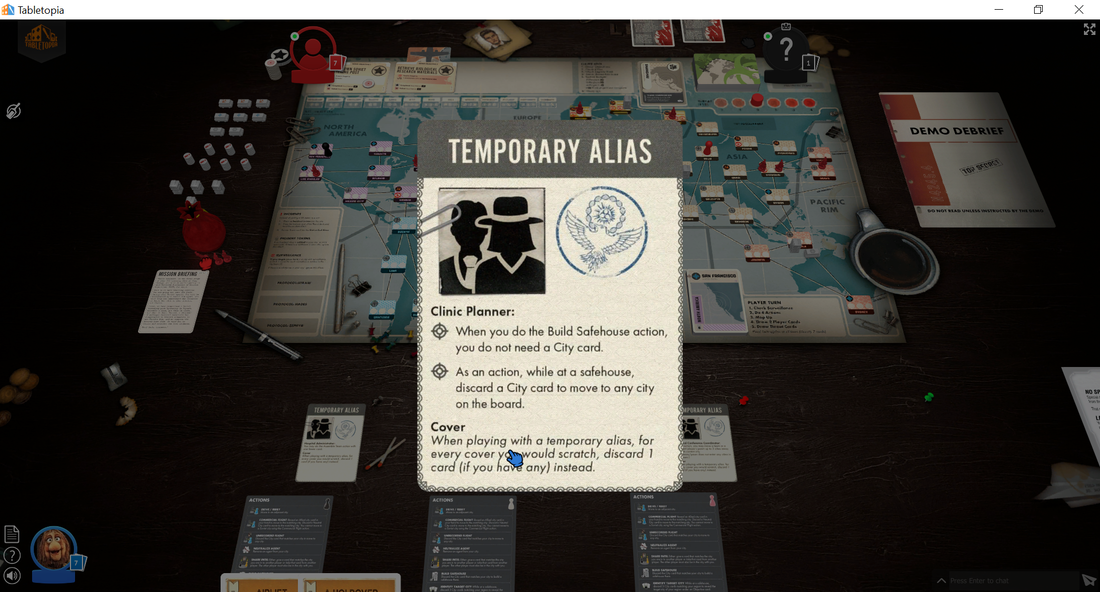
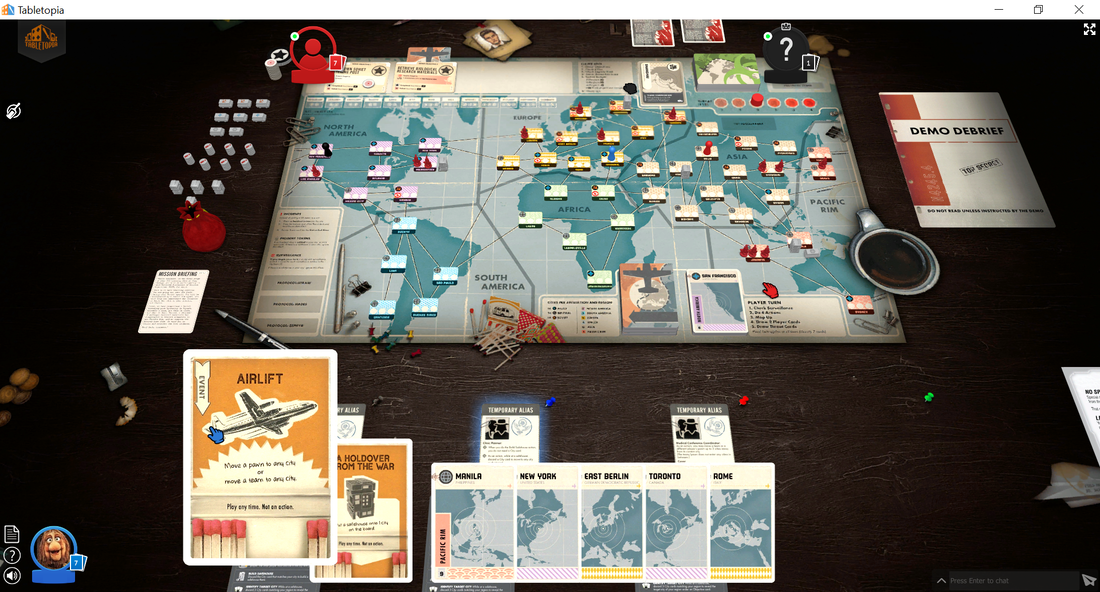
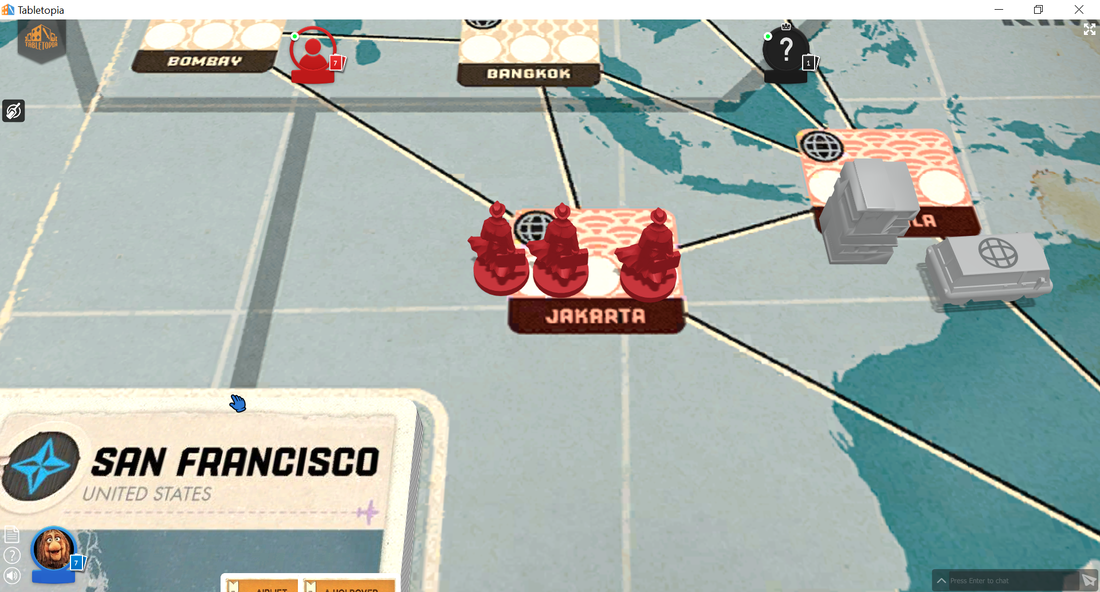
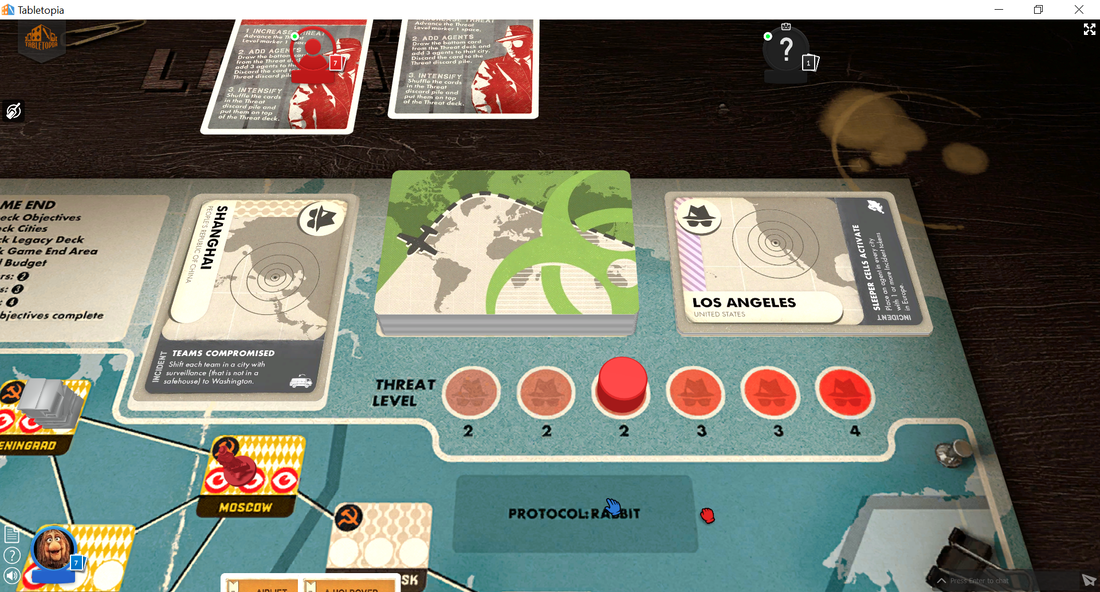
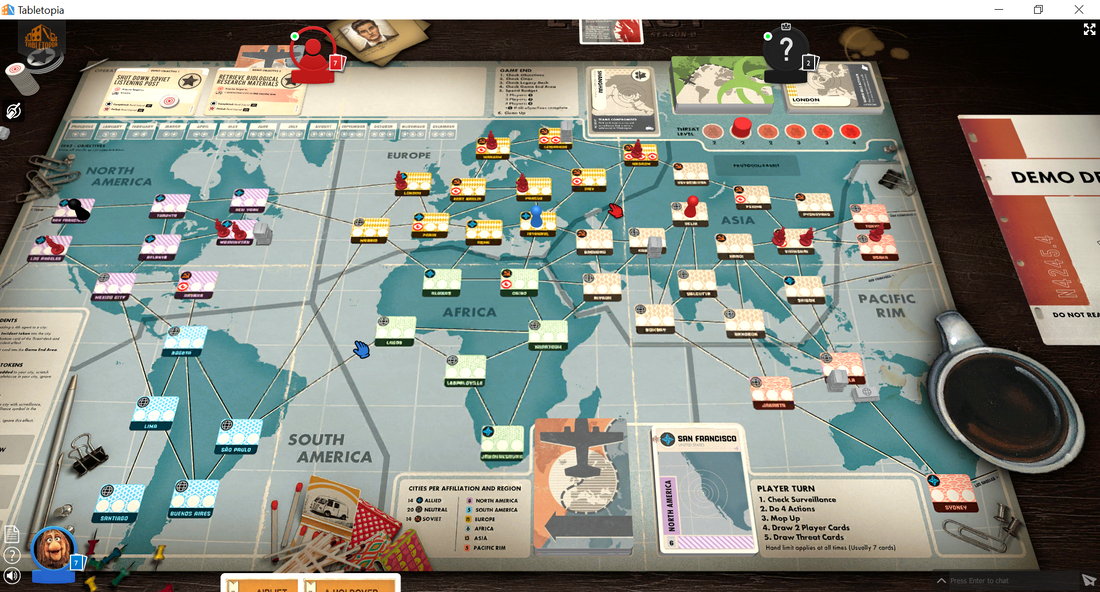
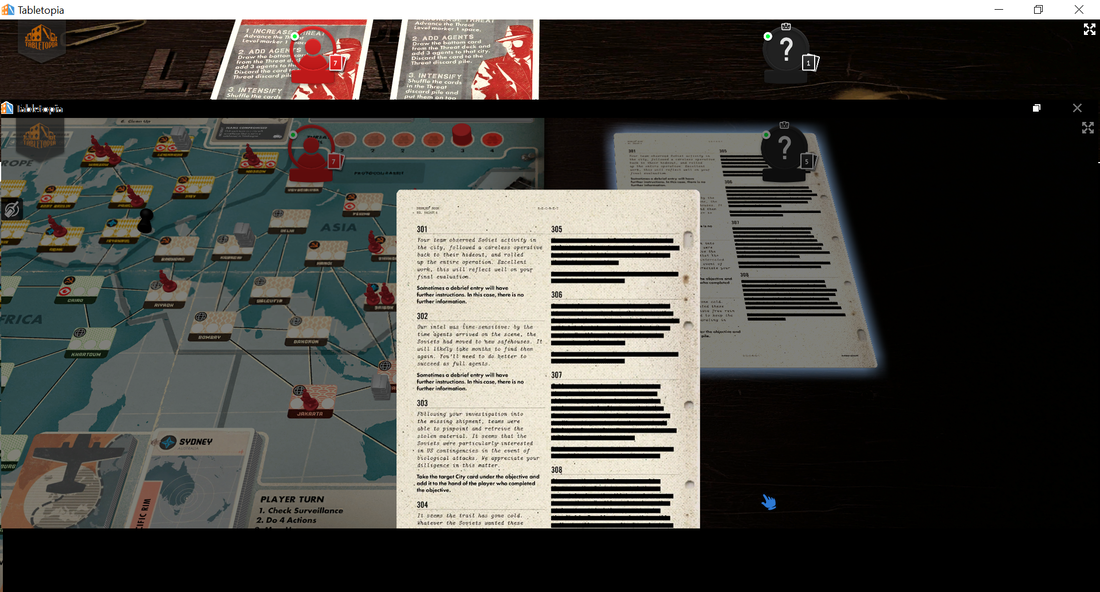

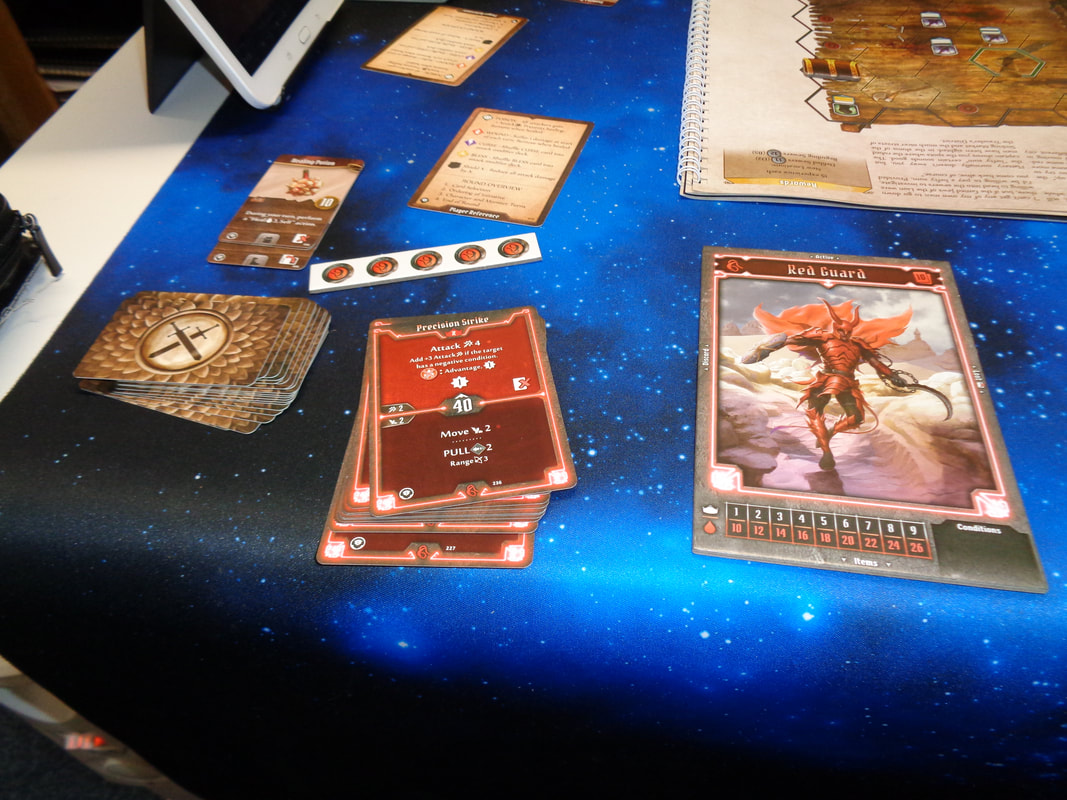
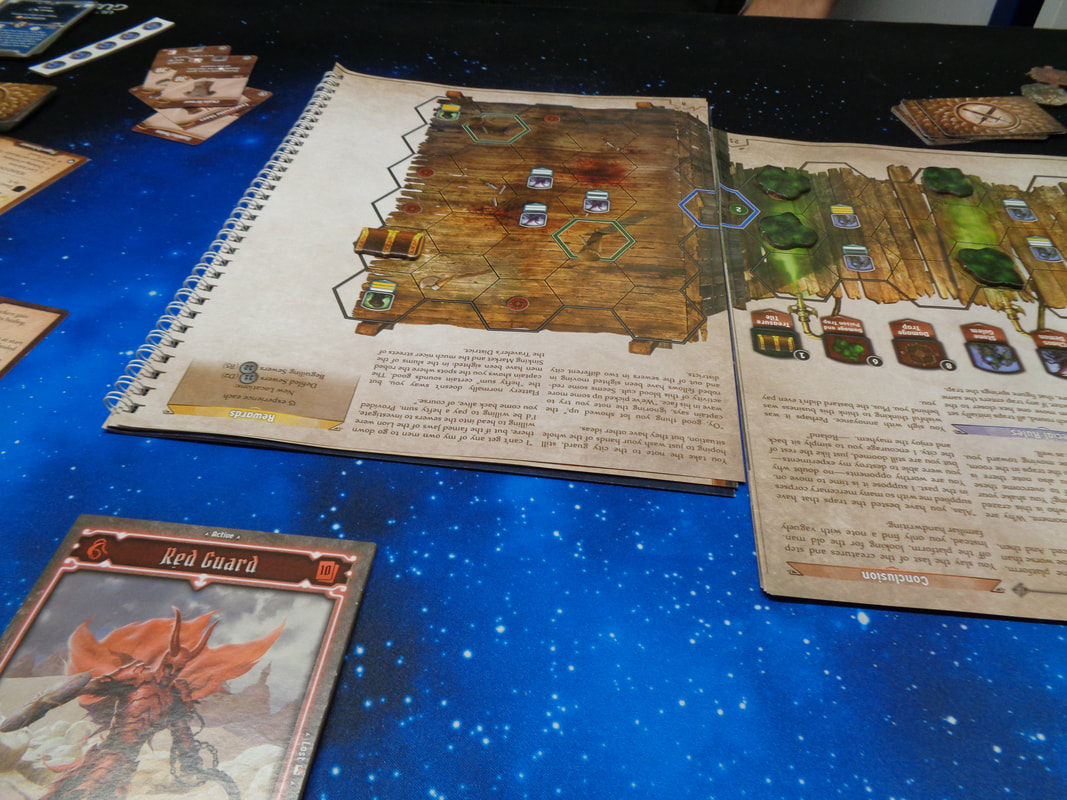
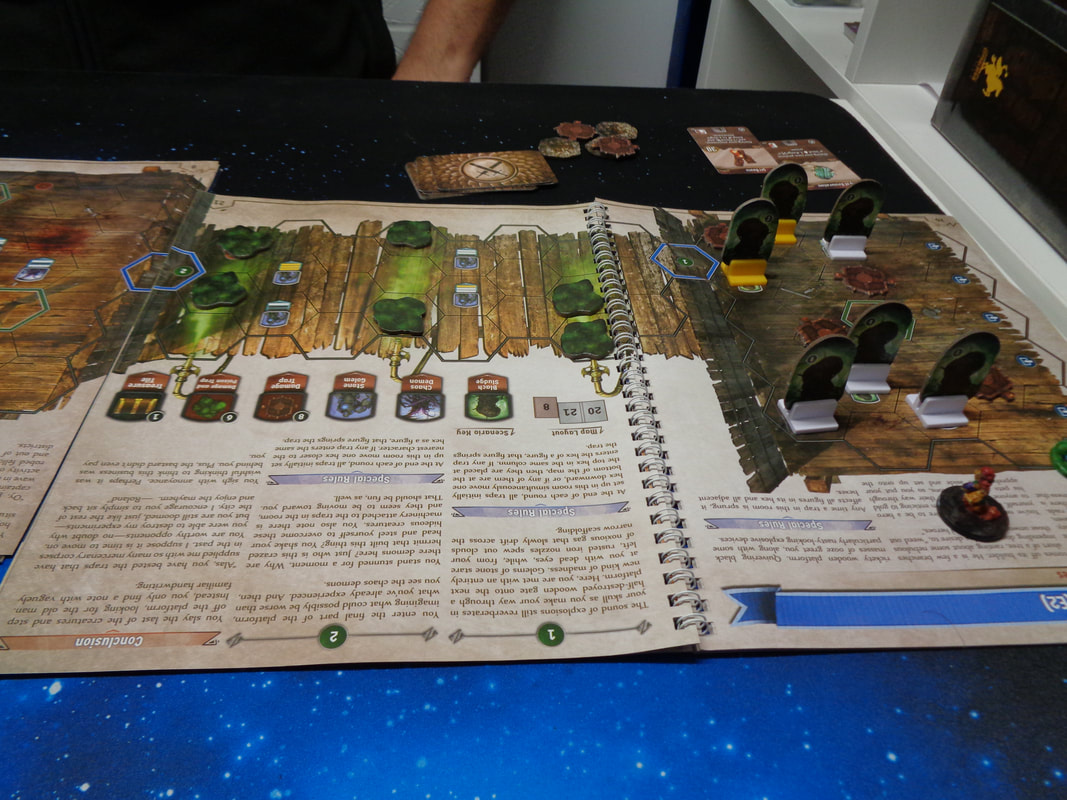
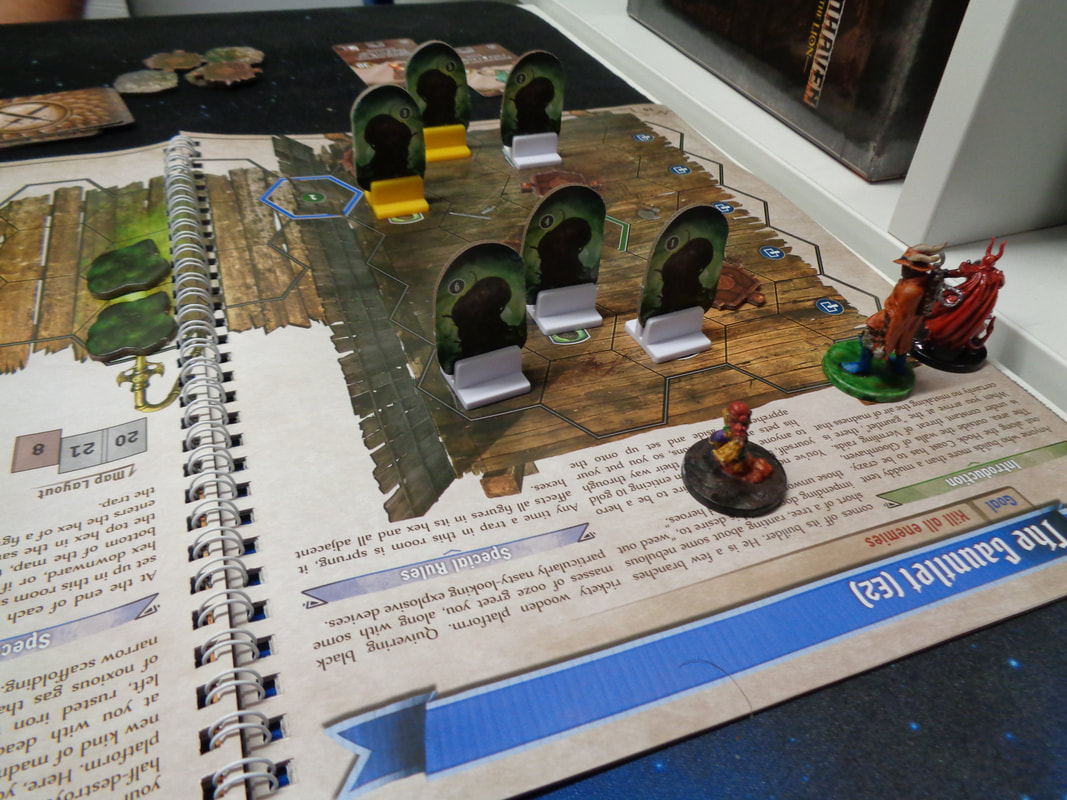
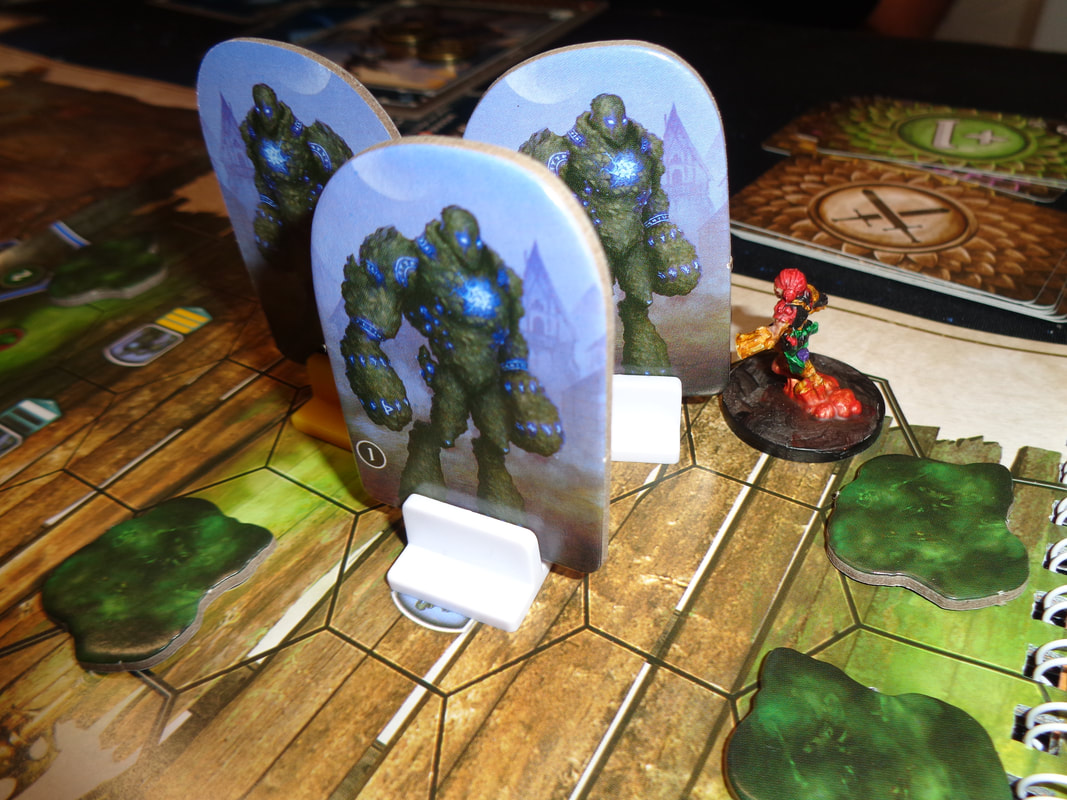
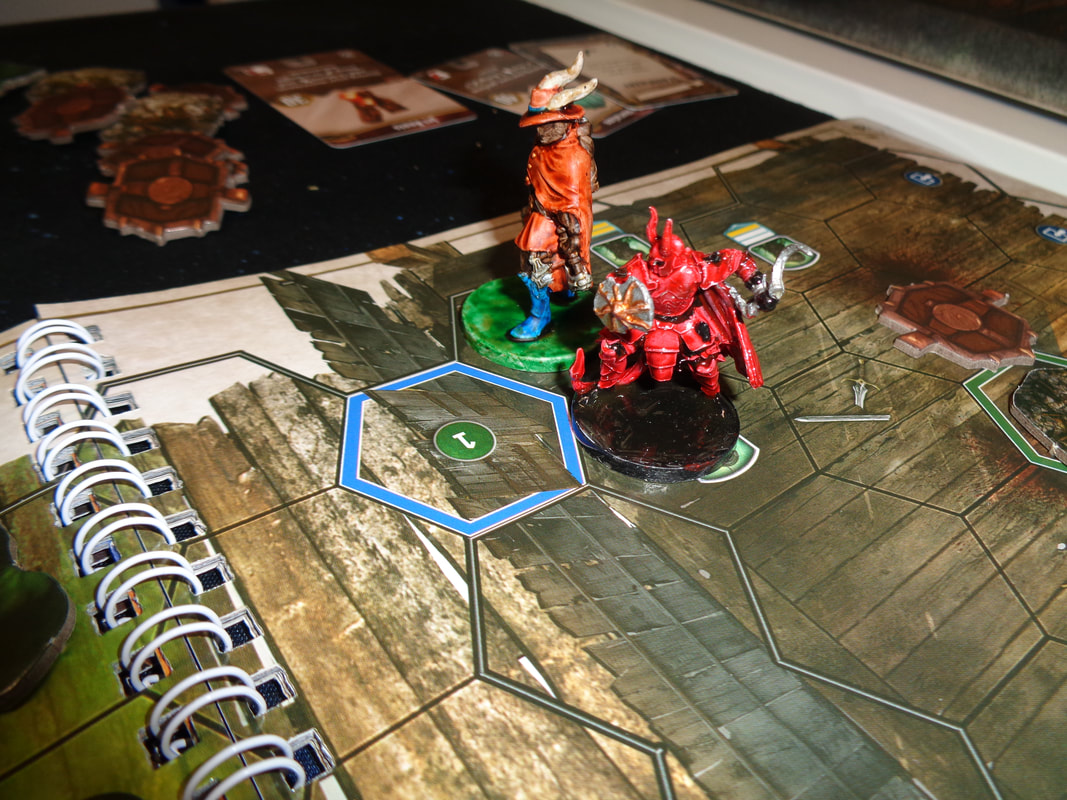
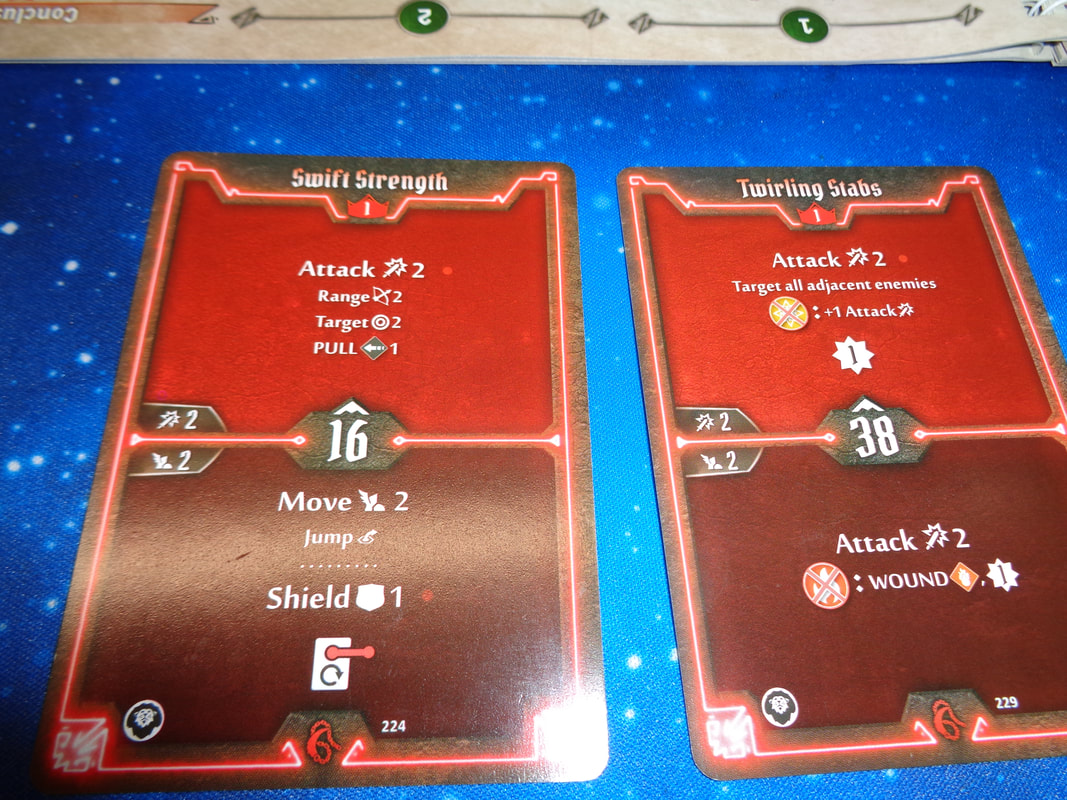
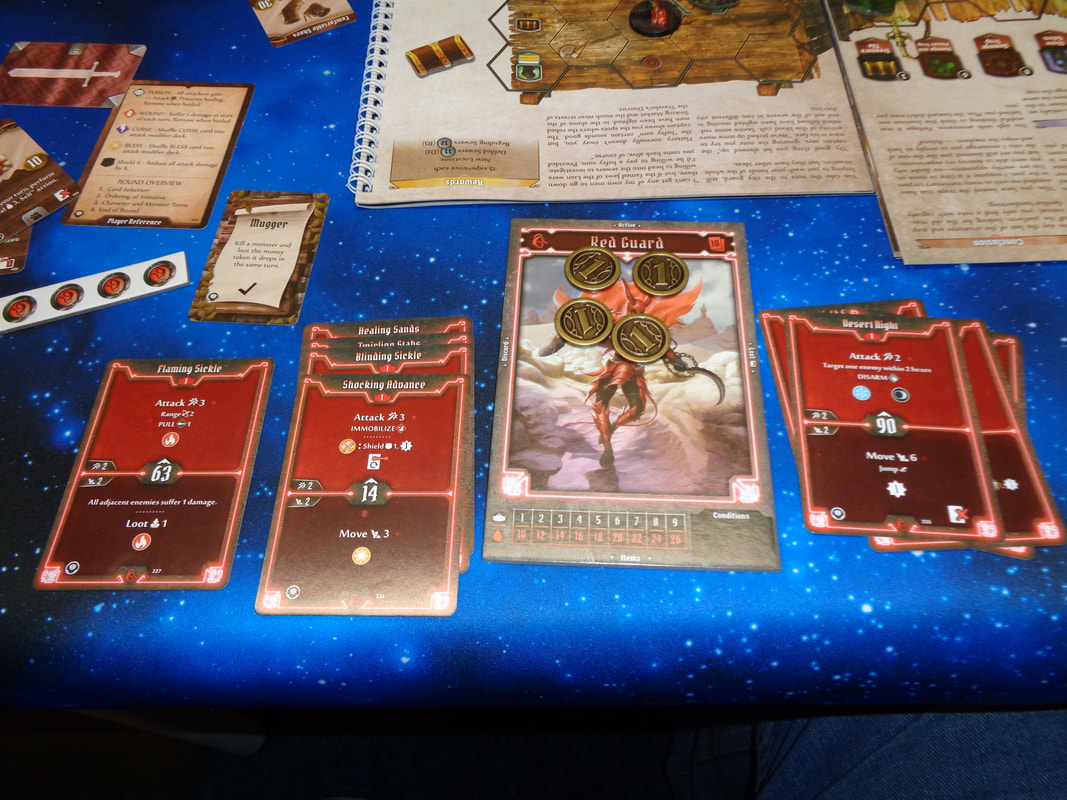
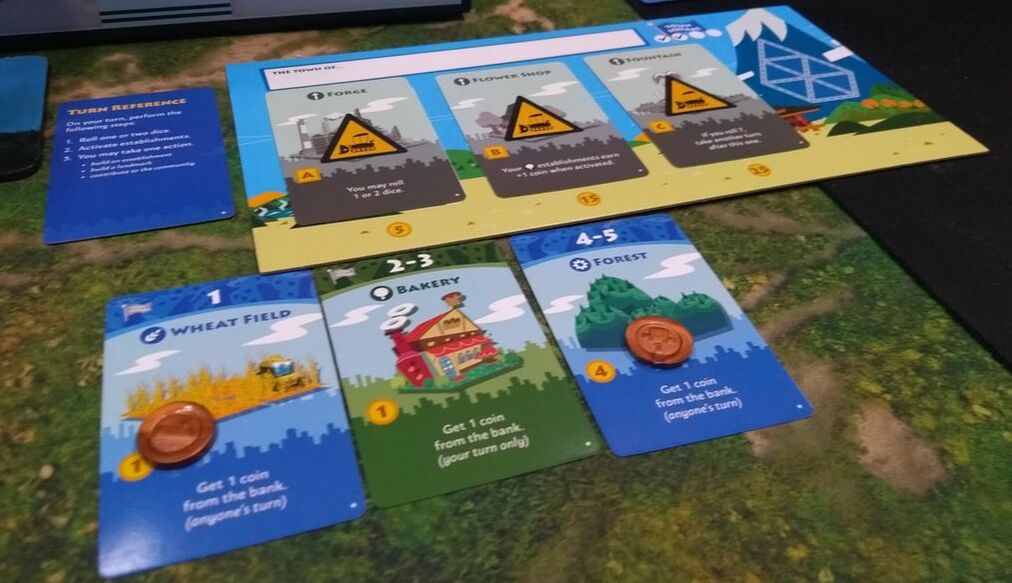
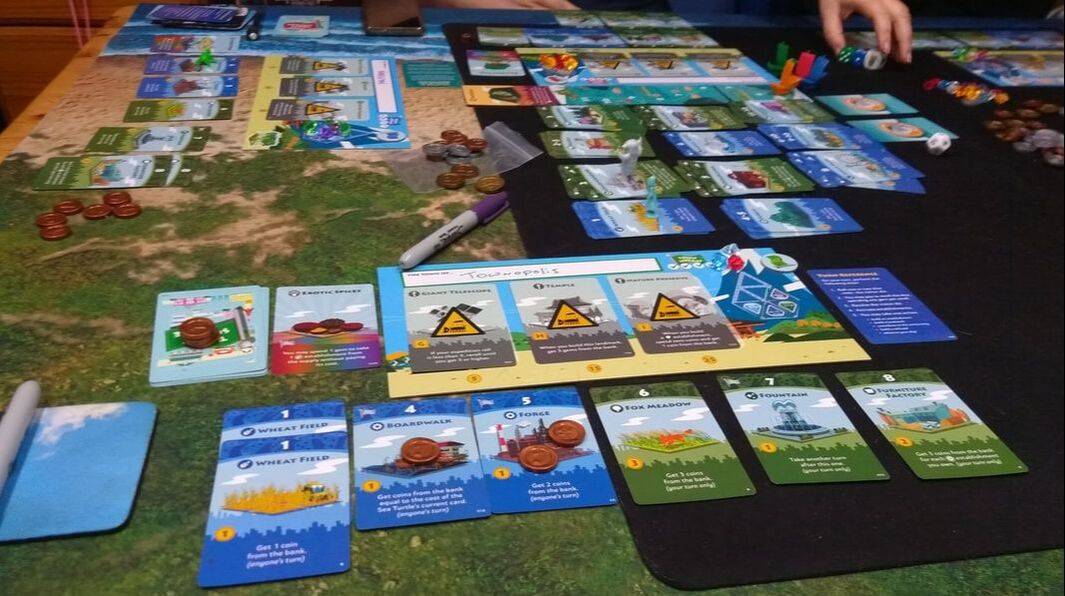
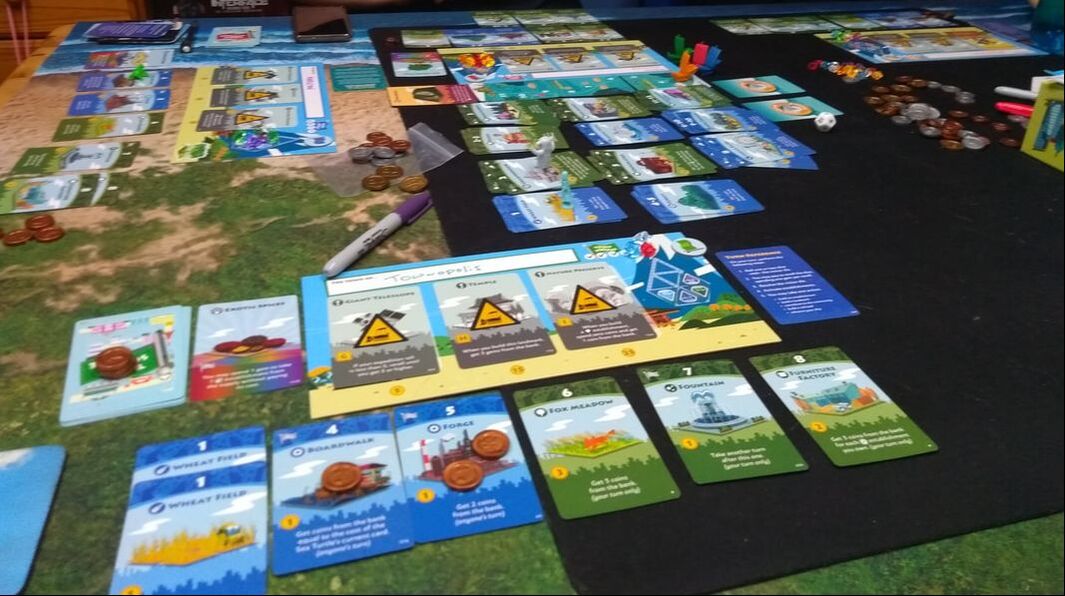
 RSS Feed
RSS Feed
